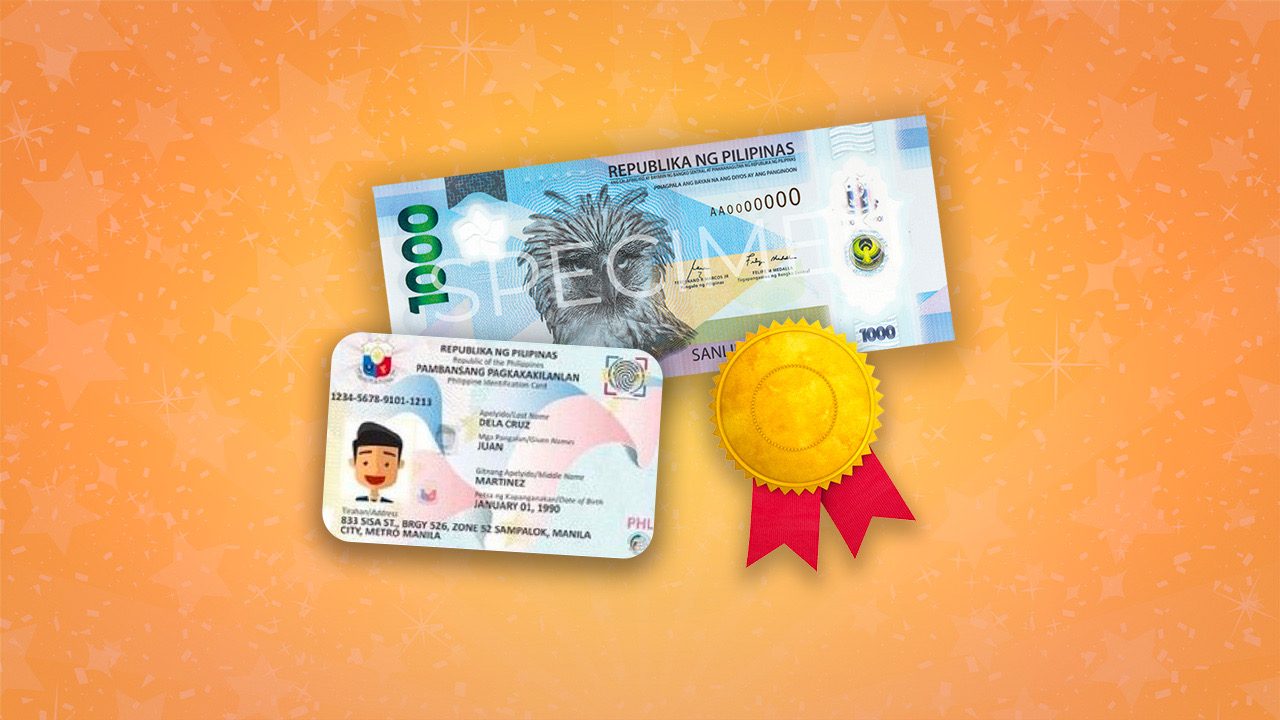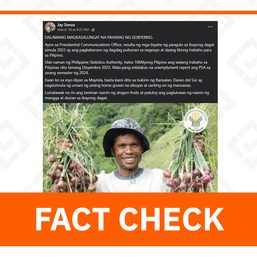SUMMARY
This is AI generated summarization, which may have errors. For context, always refer to the full article.

MANILA, Philippines – The PhilSys national ID card (PhilID) and the Bangko Sentral ng Pilipinas’ (BSP) P1,000 polymer banknote won awards at the 2023 High Security Printing (HSP) Asia regional forum despite criticism surrounding them both.
The awards were handed out by HSP Asia, a regional conference organized by United Kingdom-based business consultancy Reconnaissance. The event focuses on Asia’s latest technologies in banknotes, passports, ID cards, and other secure documents.
The PhilID was named the “Best New ID Card” in 2023, although the national ID was created by law in 2018 and rolled out as early as 2020. In its write-up, the HSP highlighted that the ID “has been particularly designed to enhance the delivery of basic services to the public as well as prevent crimes and expedite transactions in the private sector.”
The Philippine Statistics Authority, which handles the national ID system, hopes that the PhilID will centralize the information of all Filipinos and eliminate the need for citizens and resident foreigners to have a multitude of government-issued IDs. Currently, the PSA collects the full name, sex, date and place of birth, blood type, address, citizenship status, fingerprints, and iris scan of individuals.
Despite the accolade, problems have marred the implementation of the national ID system. Several years into the program, the PSA has since reached a total of over 81 million Filipinos registered, but tens of millions more remain outside the system. (READ: PSA uses boats to get more Filipinos to register for national ID)
Beyond registration, the PSA has also been criticized for its slow delivery of the actual national ID card, leaving some Filipinos stuck with a paper copy.
Best new banknote?
The BSP’s P1,000 polymer banknote, which was issued in limited quantities in 2022, was also recognized by the HSP as the “Best New Banknote” in 2023. The regional award-giving body noted the bill’s security features: “multiple transparent windows, luminescent imagery, tactile dots, [and a] large window incorporating a foil stripe.”
The BSP said the award placed “considerable emphasis” on how banknotes reflect a country’s cultural heritage and the relevance of their overall design and symbolism.
In its write-up, the HSP praised the P1,000 polymer banknote’s design, which features the Philippine eagle, describing it as an “iconic bird, which soars above storms,” that is supposed to represent the “Filipino spirit in the country in difficult times.” For its part, the central bank said the Philippine eagle was intended to symbolize “Filipinos’ uniqueness, strength, power, love for freedom, and sharp vision.”
However, not everyone is a fan of the new bill and its design, which replaced the image of three World War II heroes with the image of the Philippine eagle. In a Senate hearing on the new bill, Senator Robin Padilla told BSP officials not to “remove our heroes from our money.”
The BSP clarified that Philippine banknote designs are “cyclical,” which means that the central bank can feature heroes again in future bills.
Aside from the redesign, the BSP also faced criticism for testing out the polymer banknote during the height of the COVID-19 pandemic and for using the P1,000 bill for the test, rather than lower denominations. There were also concerns that despite the polymer bill’s longer life span, the decision to use nonbiodegradable materials in the banknote could be a step back in terms of sustainability.
“It will still not biodegrade. It will still be there and remain. It is a product that we created, and it will stay there forever as opposed to abaca and cotton,” Senator Pia Cayetano said in a hearing.
Cayetano also said sustainability should consider not just the impact on the environment, but also on sustainable communities: in this case, the local abaca farmers who used to supply raw materials for the old banknote may have their livelihoods threatened by the switch to polymer. – Rappler.com
Add a comment
How does this make you feel?









![[Pastilan] The Great Philippine Identity Sale](https://www.rappler.com/tachyon/2024/07/great-philippine-identity-sale-july-16-2024.jpg?resize=257%2C257&crop=486px%2C0px%2C1080px%2C1080px)



There are no comments yet. Add your comment to start the conversation.